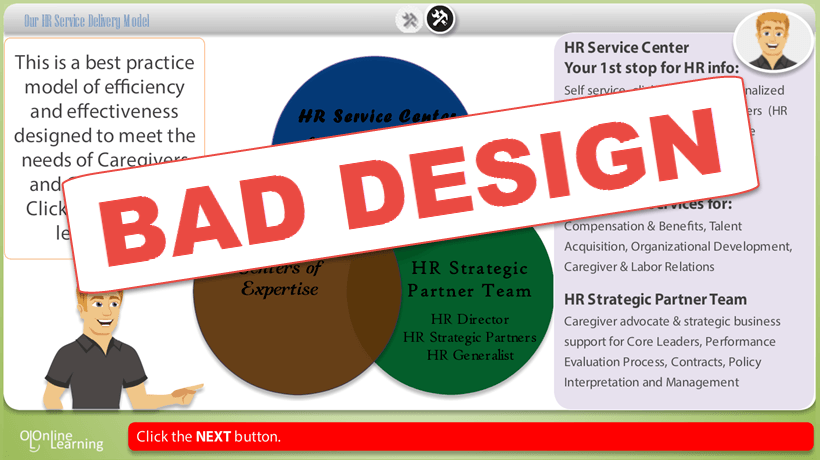A Guide To Branding Your eLearning Course
In the rapidly evolving landscape of online education, creating and branding your eLearning course has become more crucial than ever. A strong brand not only differentiates your course from the competition but also helps build trust and recognition among your target audience. This comprehensive guide will walk you through the step-by-step process of branding your eLearning course, from conceptualization to implementation.
Understanding The Power Of Branding In eLearning
Branding is not just about having a catchy logo or a memorable color scheme. It encompasses the entire identity of your eLearning course, including the values, mission, teaching style, and overall experience you offer to your learners. A strong brand can:
- Set you apart
In a crowded eLearning market, a distinctive brand helps your course stand out from the rest. - Build trust
A well-crafted brand inspires confidence and trust among potential learners. - Create consistency
Branding ensures a consistent look, feel, and message across all course materials. - Foster loyalty
A strong brand fosters a sense of belonging and loyalty among your learners. - Increase recognition
A memorable brand is more likely to be recognized and recommended by learners.
Defining Your Brand Identity
1. Identify Your Target Audience
Understanding your audience is the foundation of successful branding. Define their demographics, preferences, learning styles, and pain points. This information will guide every aspect of your branding strategy.
2. Craft Your Unique Value Proposition (UVP)
What sets your eLearning course apart? Define your UVP—the unique benefits and value your course provides to learners. This could be innovative teaching methods, specialized content, or a transformational learning experience.
3. Develop Your Brand Voice And Personality
Decide on the tone and style of communication that aligns with your course's identity. Are you formal, informal, friendly, or authoritative? These attributes shape how learners perceive your course.
Creating Your Brand Elements
1. Design A Memorable Logo
Your logo is the visual representation of your eLearning course. Be sure to design a logo that reflects your brand's essence and is easily recognizable.
2. Choose A Color Palette
Colors evoke emotions and can influence learning experiences. Select a color palette that resonates with your brand's personality and complements the content.
3. Typography Matters
Consistent typography enhances brand recognition. Choose fonts that are legible and align with your brand's vibe.
4. Develop Brand Imagery And Graphics
Create a set of visual elements—images, illustrations, icons—that align with your brand. These elements should be consistent and reinforce your course's identity. Modern-day brand creators and content creators make it hard to distinguish the differences between AI and human intelligence [1].
Crafting Compelling Content
1. Develop A Consistent Brand Tone
The way you communicate should reflect your brand's personality. Whether it's formal, conversational, or motivational, maintain consistency throughout your course materials.
2. Write Engaging Course Content
Craft content that speaks directly to your target audience. Use relatable examples, stories, and real-world applications to make the learning experience more engaging.
3. Integrate Brand Elements Into Content
Incorporate your brand's visual elements into course materials—presentations, videos, quizzes—to create a cohesive and immersive experience.
Building A Cohesive User Experience
1. Create A User-Friendly Interface
Design an intuitive and user-friendly interface for your eLearning platform. Navigation should be easy, and learners should find it comfortable to engage with the content.
2. Consistent Course Design
Maintain a consistent layout and design across all course modules. This creates a sense of familiarity and comfort for learners as they progress through the material.
Promoting Your Branded eLearning Course
1. Leverage Social Media
Use platforms like Instagram, Facebook, and LinkedIn to promote your course. Share valuable content, success stories, and updates that reflect your brand identity.
2. Content Marketing
Start a blog or produce valuable content related to your course's subject. This not only establishes you as an authority but also reinforces your brand's expertise.
3. Engage With Learners
Create a community around your course. Engage with learners through forums, webinars, or social media groups. This builds a loyal following and fosters a sense of belonging.
Evolving Your Brand Over Time
Branding is not static. As trends change and your course evolves, be prepared to adapt and refine your branding elements while staying true to your core identity.
Wrapping Up
Branding your eLearning course is a multifaceted process that requires careful planning and attention to detail. By understanding your audience, defining your brand identity, creating compelling content, and delivering a cohesive User Experience, you can create a powerful brand that resonates with learners, fosters loyalty, and sets your eLearning course apart in a competitive market. Remember, effective branding is not just about aesthetics; it's about forging a connection with your learners that goes beyond the virtual classroom.
References
[1] Exclusive Research: Unveiling the AI Impact on Content Creation
Editor's Note: Download eLearning Industry's media kit to learn more about advertising solutions that can help you promote your online course.









